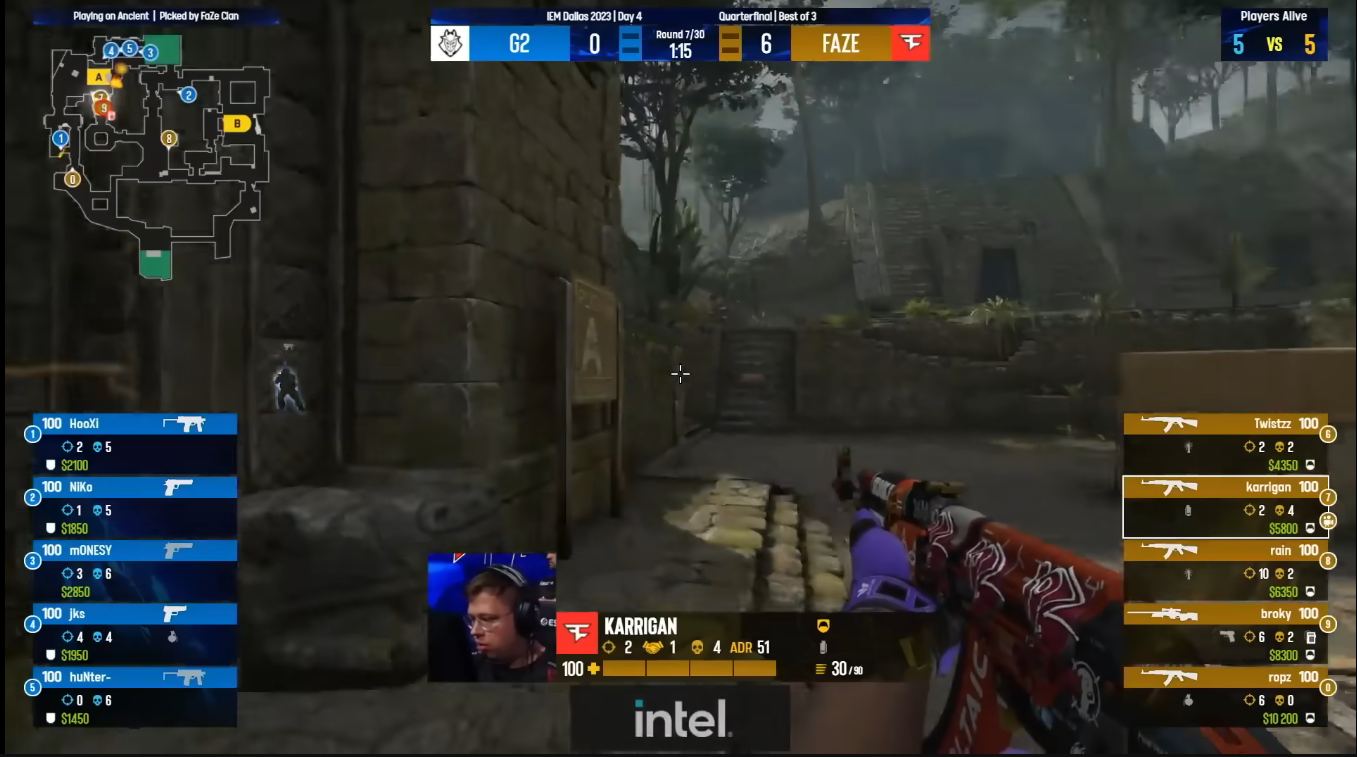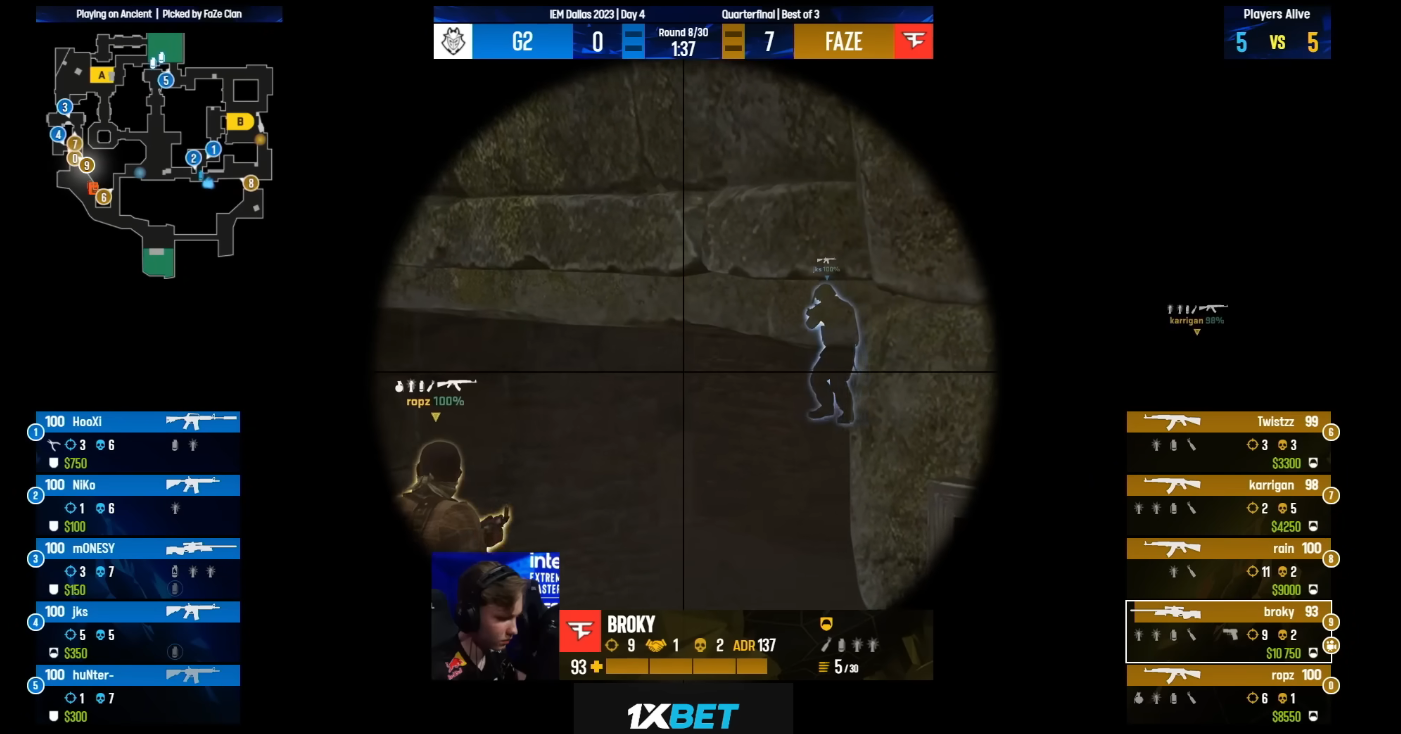A Deep Dive Into Professional Counter-Strike
Photo via Steam
Professional Counter-Strike (CS) is one of the more simplistic and easier to understand esports out there. In this article, I wanted to go into a more in-depth explanation behind the esport for those who want to start getting into watching professional counter-strike.
Counter-Strike Global Offensive (CSGO) is the current installment in the series that is being played professionally and at tournaments with the newly announced Counter-Strike 2 (CS2) being implemented in pro play starting with the Hussar’s Cup in Poland this August.
CSGO is a five versus five tactical first-person shooter that is a one-life round based game. In each round, the counter-terrorists (CTs) are trying to stop the terrorists (Ts) from planting the bomb on either the A or B bomb site. Each team can win the round by either eliminating the entire enemy team before the round ends or if the terrorists plant the bomb and hold till detonation while the counter-terrorists can win by defusing the bomb before it detonates.
The match is split into two halves spanning 15 rounds with each team getting an opportunity to play on the counter-terrorist and terrorist side.
The professional level plays these matches in sets that are either best of ones or best of threes. In a best of one, the map is selected randomly from the competitive map pool and the teams will play a single game to see who advances and who falls to loser’s bracket. Best of ones take place in majors when there are a large amount of teams in the tournament and has multiple stages.
Best of three are played similarly, but it adds map bans and picks. How it works is that each team starts off banning a map, then it will alternate with a team picking a map and banning one. The final map is not picked by either it is the decider map which is chosen by randomly selecting between the last two remaining maps that are not picked or banned.
A quarterback is the leader of an offense in football. In counter-strike, it is the in-game leader (IGL) that is essentially the quarterback of the team setting up strategies and game plans during each round. Counter-strike teams are set up with an IGL, a rifle player who primarily uses assault rifles like the AK-47 or M4A1-S, and a player who is the designated sniper for the team.
Each round that you watch you will see that the players have money attached to their name that they will use to buy guns, armor, and grenades for the given round. They earn money through actions like getting kills, planting or defusing the bomb, and surviving a round. Loss bonuses are given to teams that lose multiple rounds consecutively and the loss bonus increases giving teams that are losing a chance to buy weapons to compete against the other team.
A team’s economy is one of the most important parts of professional counter-strike as it dictates what teams can do with the equipment they can buy. This leads to team’s using specific strategies and buy patterns that the viewer is able to identify when they see them.
There are three different types of round strategies a team can go with based off their economy that are eco rounds, light buys, force buys, and full buys.
Example of an Eco Round by FaZe Clan
An eco round is when a team is low on money and will only buy one or two pistols and no armor to save money and play for a loss bonus. Eco rounds are usually played by teams committing to one spot or site on the map to attempt to eliminate a player and secure their gun for the next round.
Example of a Light Buy by G2 Esports.
Light buys are when teams opt to buy things like sub-machine guns or will have one or two players buy rifles that can be cycled to players if the player dies during the round. Light buys are done when a team is looking to take as many enemies as possible out in a round rather than win it.
Force buys are as the name suggests when a team has to forcefully buy using whatever money they have in their economy. This is done mostly on match point when a team is facing a map loss.
Example of Full Buys by both teams
Full buys are the most common of the four, and is used to describe a buy phase where everyone on a team is able to fully buy a full loadout.
Esports overall is a difficult and daunting field of sports to get into especially if you do not play or understand the game you are trying to watch. Counter-Strike has been able to stay on top because of it’s simple and easy to pick up mechanics that allows even new or casual viewers to understand what is going on in any given round.
If you are or have been interested in watching any form of esports then I highly suggest Counter-Strike as your first as it has many aspects in it that other games have adapted and still use to this day.



